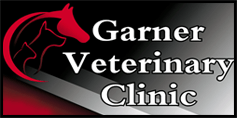Request a Call Back
Vet Clinic: 641-923-2355
Pet Resort: 641-925-1156
,
This is a placeholder for the Yext Knolwedge Tags. This message will not appear on the live site, but only within the editor. The Yext Knowledge Tags are successfully installed and will be added to the website.
Pet Dental Services
Dental Care for Small Animals
- 24-Hour Emergency Veterinary Care- Pet Boarding and Wash Available All Seven Days- Free Estimates
Dental Care for Your Pet Begins at Your Home
Ideally, plaque should be removed from pets' teeth every day before it mineralizes to tarter. Brushing properly and feeding a properly balanced diet will help reduce the accumulation of plaque and tartar on the teeth.
Make it a daily routine to brush your pet's teeth gently with a soft-bristle toothbrush and pet-specific toothpaste to help minimize future issues with your dog or cat's teeth!
Signs of Periodontal Disease in Pets
- Bad breath is one of the first signs noticed
- Yellowish-brown crust of plaque on the teeth near the gum line
- Red, swollen, or bleeding gums
- Abnormal drooling
- Decreased appetite
- Dropping food out of the mouth
- Loose or missing teeth
If left unchecked, bacteria from the mouth can enter the bloodstream and travel to major organs, starting infections there and seriously compromising the health of your pet.
The organs with the highest blood flow are most susceptible to infection, such as the lungs, heart, kidneys, liver, and even the brain. Damage to these organs caused by infection can shorten the lives of dogs and cats.
The Process of a Professional Pet Dental Cleaning
- Antibiotic treatment - prior to any dental procedure, your pet will be placed on antibiotics, beginning two days prior to the procedure and continuing for a total of ten days.
- Preanesthetic profile - A blood profile will be done on the day of the procedure to check for any liver, kidney, or diabetic conditions to ensure safety during anesthesia.
- General anesthesia - A proper dental cleaning can only be done under anesthesia. The slightest movement can cause harm when using mechanical and sharp instruments in the mouth. Also, scaling below the gum line where many bacteria can hide is also important for the maximum benefits of this procedure
- Scaling and polishing - Gross calculus deposits are removed and tooth surfaces are cleaned through the use of a power scaler. Surfaces are then polished to complete the process.
- Tooth Extraction - If necessary, any loose damaged or problematic teeth will be removed to decrease future dental problems.
- Home Care - Continue with antibiotic treatment for a total of ten days. Utilize a regular dental care regimen, including brushing your pets teeth, feed appropriate and nutritional food, and schedule regular dental checkups.
Pet Dental Facts
- Periodontal disease is the most prevalent disease among dogs and casts
- 80% of dogs and cats show signs of oral disease by age three
- Periodontal disease is common in dogs of smaller breeds
- Periodontal disease is more common as pets grow older
Prompt Dental Care for Your Dog or Cat
Call for a FREE estimate today!
(641) 923-2355
(641) 923-2355
Friendliest people. All of them are animal lovers.
- Lori Fank
VETERINARY CLINIC LOCATION
,
This is a placeholder for the Yext Knolwedge Tags. This message will not appear on the live site, but only within the editor. The Yext Knowledge Tags are successfully installed and will be added to the website.
This is a placeholder for the Yext Knolwedge Tags. This message will not appear on the live site, but only within the editor. The Yext Knowledge Tags are successfully installed and will be added to the website.
HOURS
- Mon - Fri
- -
- Saturday
- -
- Sunday
- Closed
Monday
Tuesday
Wednesday
Thursday
Friday
Saturday
Sunday
This is a placeholder for the Yext Knolwedge Tags. This message will not appear on the live site, but only within the editor. The Yext Knowledge Tags are successfully installed and will be added to the website.
PET RESORT AND WASH LOCATION
375 Hwy. 18 W.
Garner, IA 50438
(641) 925-1156
HOURS
- Mon - Sun
- - -
PET WASH HOURS
- Mon - Sun
- -
Hi. Do you need any help?
Privacy Policy
| Do Not Share My Information
| Conditions of Use
| Notice and Take Down Policy
| Website Accessibility Policy
© 2024
The content on this website is owned by us and our licensors. Do not copy any content (including images) without our consent.


Share On: